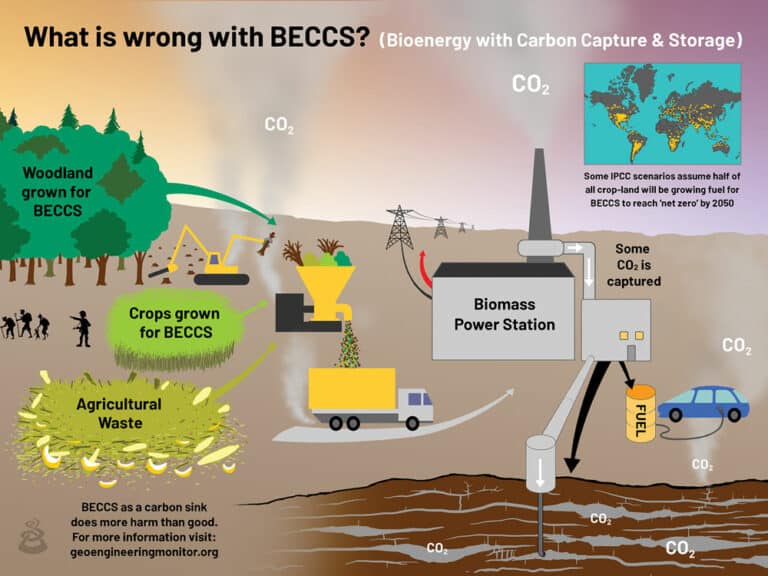Bio-Energy with Carbon Capture and Storage (BECCS)

Download: https://www.geoengineeringmonitor.org/wp-content/uploads/2021/11/BECCS_Briefing.pdf
Overview
BECCS aims to capture CO2 from bioenergy applications, and store it through either Carbon Capture and Storage (CCS) or reuse it with Carbon Capture, Use and Storage (CCUS). This theoretical carbon dioxide removal (CDR) approach demands burning very large quantities of cultivated crops, trees or plant residues to generate energy – such as electricity, or heat – or converting them into ethanol to be burned. The CO2 arising from the combustion process is then – so the theory goes – filtered from the exhaust gases, usually with energy-intensive postcombustion capture. If a CCS approach is used, the captured CO2 is compressed into liquid form and transported to sites where it can be pumped underground, theoretically, for long-term storage. CCUS is a proposal to “store” captured CO2, usually temporarily, in manufactured goods or synthetic fuels. BECCS has been called “carbon negative” because bioenergy is wrongly assumed to be “carbon neutral”, based on the idea that plants will regrow to fix the CO2 that has been emitted. Several scientists have pointed out that this claim overlooks emissions from land use change as well as life cycle emissions, like the CO2 emitted during cultivation, harvest and transport.